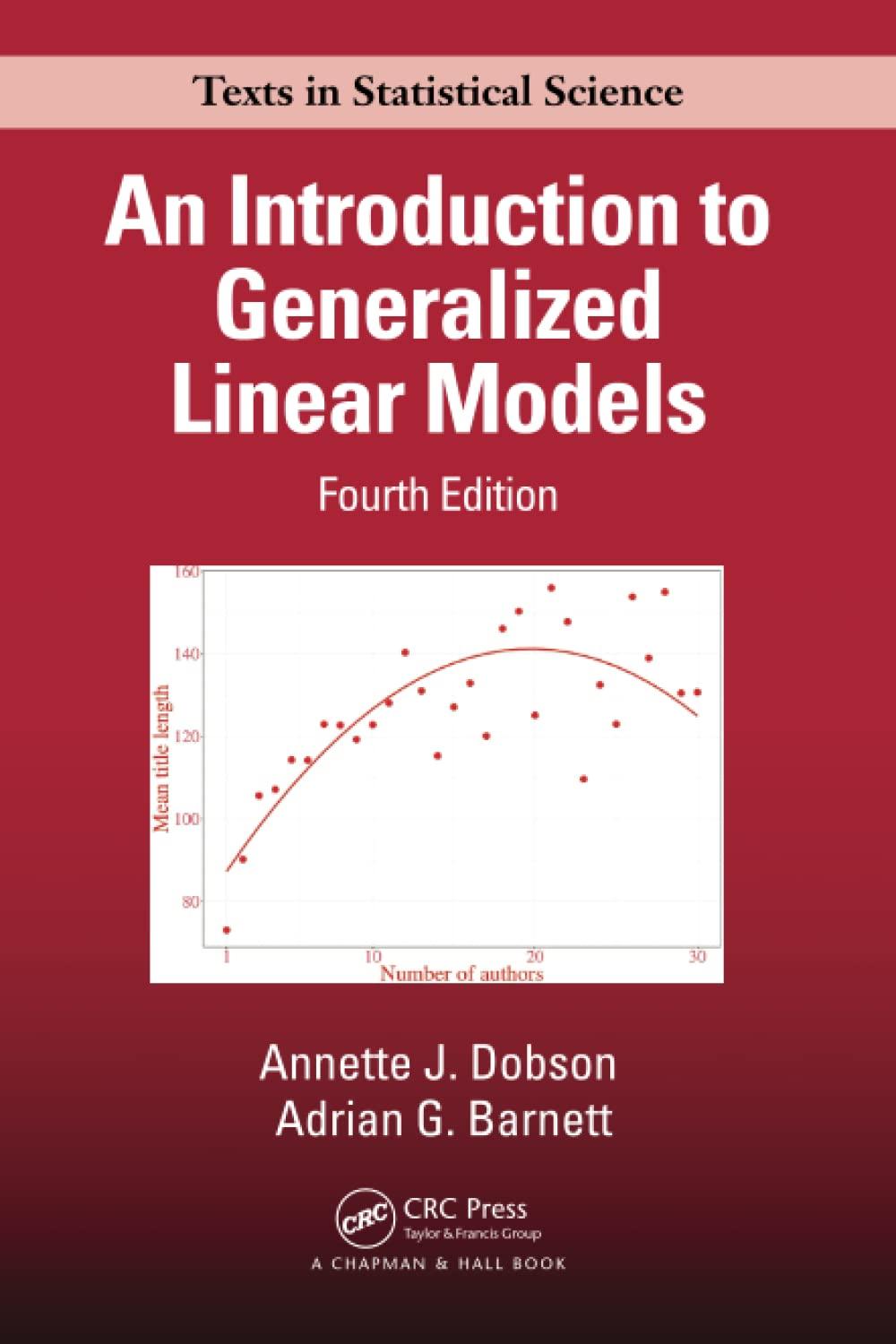2.1 Genetically similar seeds are randomly assigned to be raised in either a nutritionally enriched environment (treatment
Question:
2.1 Genetically similar seeds are randomly assigned to be raised in either a nutritionally enriched environment (treatment group) or standard conditions (control group) using a completely randomized experimental design.
After a predetermined time all plants are harvested, dried and weighed.
The results, expressed in grams, for 20 plants in each group are shown in Table 2.7.
We want to test whether there is any difference in yield between the two groups. Let Yjk denote the kth observation in the jth group where j = 1 for the treatment group, j = 2 for the control group and k = 1,...,20 for both groups. Assume that the Yjk’s are independent random variables with Yjk ∼ N(µj ,σ
2 ). The null hypothesis H0 : µ1 = µ2 = µ, that there is no difference, is to be compared with the alternative hypothesis H1 : µ1 =6 µ2.
a. Conduct an exploratory analysis of the data looking at the distributions for each group (e.g., using dot plots, stem and leaf plots or Normal probability plots) and calculate summary statistics (e.g., means, medians, standard derivations, maxima and minima). What can you infer from these investigations?
b. Perform an unpaired t-test on these data and calculate a 95% confidence interval for the difference between the group means. Interpret these results.
Step by Step Answer:

An Introduction To Generalized Linear Models
ISBN: 9781138741515
4th Edition
Authors: Annette J. Dobson, Adrian G. Barnett






